I thought it would be prudent to step back and look at the big picture: just how good is this simulation overall. So I ran the standard Business As Usual scenario, in which the player does nothing and the system evolves on its own. Here are some of the outputs:
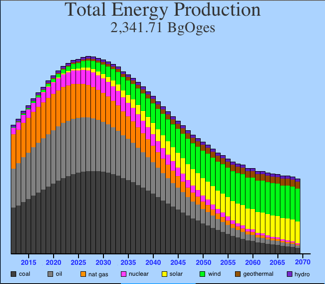
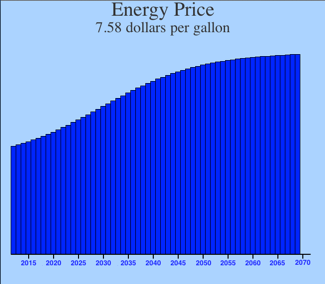

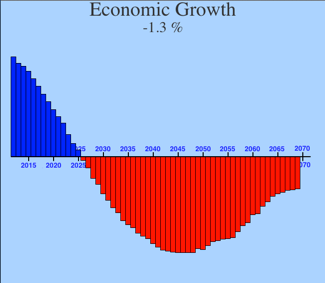
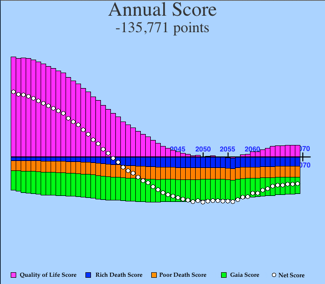
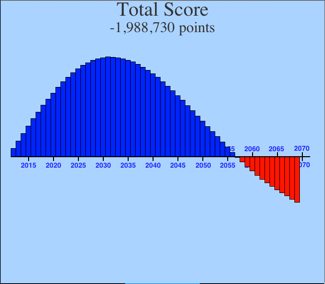
I’m not happy with the reduction in global GDP: I really don’t believe that things will get that bad. It happens because the price of energy depresses industrial output, which depresses overall GDP. The problem is that the global GDP is increasingly shifting to services instead of manufactures, and thus the reductions in industrial output are not as serious a problem as the simulation makes them. I previously included a page for services as an economic factor, but in order to make it functional, I had to make it dependent upon the educational level of the population, which in turn required a page on educational spending, which the player could subsidize – but the subsidy was always much less than required to meet humanity’s needs, so I added an automatic expenditure based on economic growth. At this point, the whole thing was just too damn complicated to continue. It was extremely difficult for me to keep control of the simulation: too much education could trigger a wild boom negating all the environmental problems. Since this is a simulation about environmental issues, I don’t want to muddy the waters with non-environmental issues. I was tempted by the argument that educational level is inversely correlated with population growth, making education an environmental issue, but again, it turned out to be too complicated in practice.
My problem here is that I am torn between accuracy and learnability. This thing is already too damn complicated for many students; I’ll just have to come up with other ways to simplify it. Earlier I had thought it necessary to have energy price have a strong inhibiting effect on the economy, but now my thinking has reversed. Now I am thinking that I need to reduce the inhibiting effect of energy price by using its square root, in the hope of keeping industrial production up, and compensating by increasing the costs of climate change damage.
Later...
I’ve been tuning up a storm here and I decided to eliminate Industrial Production because it is based almost entirely on Total Energy Production. So cut out the middleman and have Total Energy Production feed directly into Global GDP. This also takes out Industrial Waste and the Industrial Waste Tax and the Industrial Waste Tax revenues. While I was at it, I wiped out Water Pollution, its effects on biodiversity, and Water Pollution Deaths. Thus, I eliminated six pages at a single blow. However, now the system is back out of balance. I’ve gotten the BAU scenario in fairly good shape, but you can still succeed by levying an impossibly large carbon tax. So I have to make the economy more sensitive to that kind of stress.
And here I shall stop this log for the day. I’ll keep working, but it’s time to post this.
